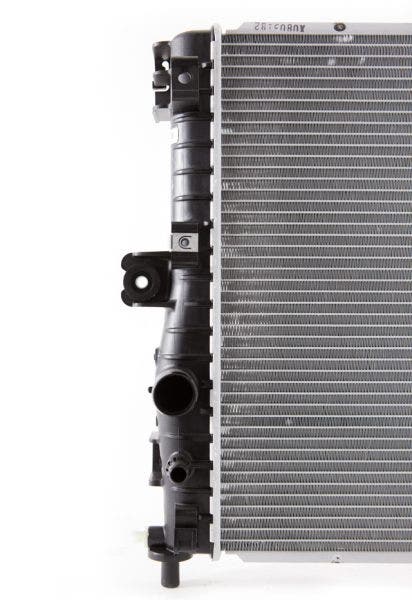
Rad, White, and Blue - Performance Aluminum Radiator R&D, Part 1 - Stock Review
The automotive industry is like a man-made animal kingdom. Manufacturers design and build these mechanical beasts for their specific purpose in this petrol-powered jungle. Just like any ecosystem, these vehicles can either peacefully cohabitate or evolve to either evade or run down their competitors. Some live on to become majestic beasts while others go extinct. Thanks to our inherent love for speed, the Corvette has stuck around since its inception and is now on its seventh and pushing an eighth generation. While the Corvette might be an old timer, especially in the realm of sports cars, this spry geezer is still showing these youngsters how it's done.

The C6 might have gone out with an LS9-powered bang, but the C7 came in with a thunderous boom. Corvettes, no matter the generation, all seem to have their own timeless look, slightly updating the visuals from each iteration. The C7, however, molted its skin and entered into the market with a much more futuristic look. The current gen is still round where it counts, which includes the track-focused aerodynamics built into the body with enough pronounced body lines to give this American Muscle hero an Italian supercar look. And we haven't even got to the Z06 yet.

Looks aren't the only aspect of this Corvette that carried the C7 into the 21st century. Chevrolet introduced the LT series, their newest line of small block V8s, under the hood. The new heart of this metal creature features direct injection, coupled with high-compression for an efficiency-packed 6.2L producing 455 hp and 460 tq. The mighty roar this thing releases is even louder when combined with the 1.7L Eaton supercharger strapped to the intake manifold in the track-focused Z06. With the LT4 taking the place of the once monstrous 7.0L LS7, this Z06 is even more savage than before"almost too much for most to handle.

The C7 becomes an ecosystem within itself, the fresh-faced LTs in a symbiotic relationship with the updated transmissions (7-speed manual, what?!) and magnetorheological dampers to create a driving experience that benefits the smiles-per-miles rating. All seems to coexist except this Corvette's cooling system of course.

The C7 made two different splashes once they released. For the first, just look at the previous photos and re-read the last two paragraphs. The second was that these alleged "track focused" sports cars could hardly handle spirited backroad driving, let alone a hot lap at Leguna Seca. Keeping these LT engines cool under the hood of the Corvette seems to be quite the challenge for Chevy. From the time the C7 launched, there have been several reports of all trims (from the Stingray to the Z06) not being able to keep their cool. Some of these reports even came from the journalists who set out to review the newest iteration of the 'Vette. GM has also been the subject of four different class action lawsuits due to the poor cooling on their sports car that was designed and marketed to be a tarmac devouring animal.

The issue is twofold. There are limited options for fresh, cool air to enter the engine bay and the radiator. Some things never change, and some keen readers might remember that this was a similar symptom when it came to the C6. The single opening on the front of the C7 might give it that Ferrari-esque look, but in this case, beauty is pain. The issue is only compounded when we turn to the Z06, which has this single opening completely obstructed by the supercharger's heat exchanger, strangling the radiator from necessary airflow.

The second prong to these overheating issues is the radiator itself. One would assume that given the prestige behind this car, along with the sheer size and punch these V8s have, that there would be a radiator to match. In the case of the C7, what comes installed is not exactly up to snuff.


Granted, automotive radiators have come a long way, and given the tapering nose of the bodywork, this radiator still carries a good deal of surface area. However, GM provided its Corvette customers with a single, and barely an inch thick, row of fins to cool the LT1 and only about 50% more of that for the heavy hitting Z06. Connecting those tubes and fins to the rest of the cooling system, GM used some substantially sized plastic end tanks. Where this is great for ease of producing tens of thousands of units, it's not great for durability in the long run. We hope to change that.

Even though the Corvette is the definition of a mechanical beast, this generation leans more toward being the hunted rather than the hunter in this vast tarmac wilderness. It has heat to thank for that. The once unsuspecting king of the jungle is now old and weary and can't quite seem to run like it should. Luckily, we're already working to empower the C7 so it can beat the heat. Stay tuned for more on the new radiator design.
Thanks for Reading!
-Nick




